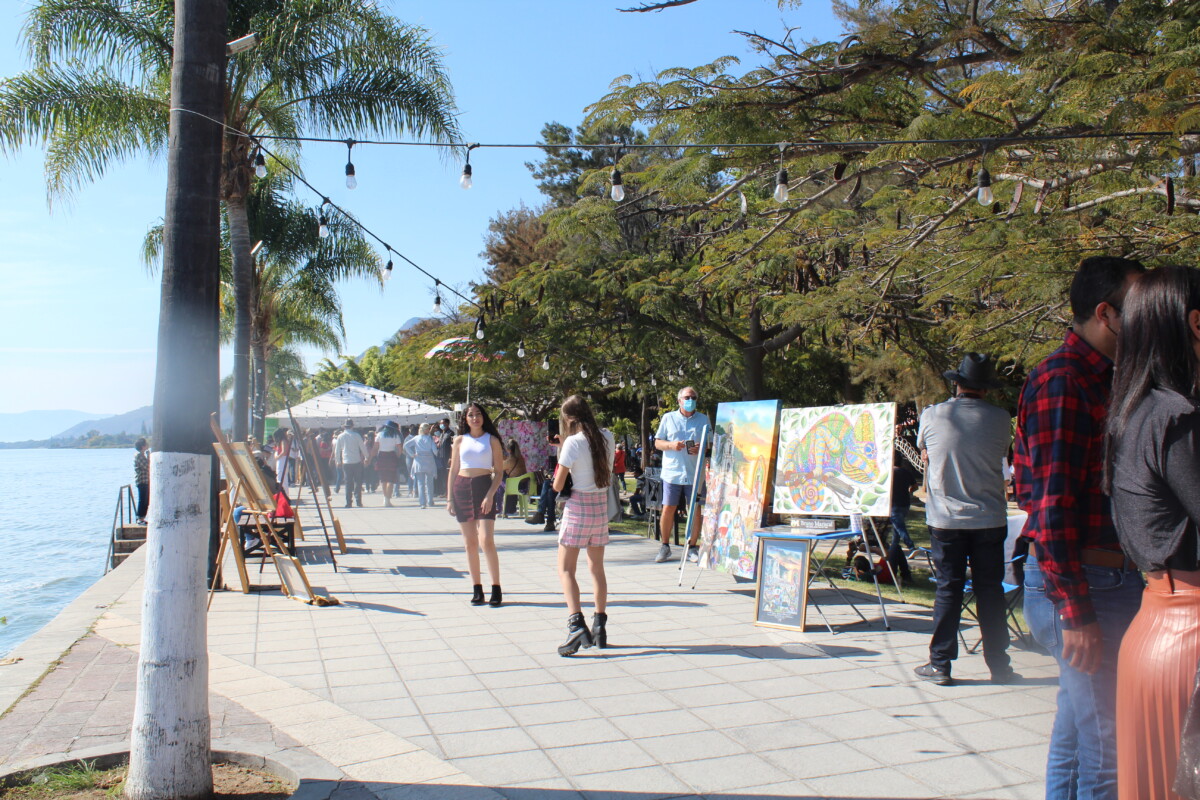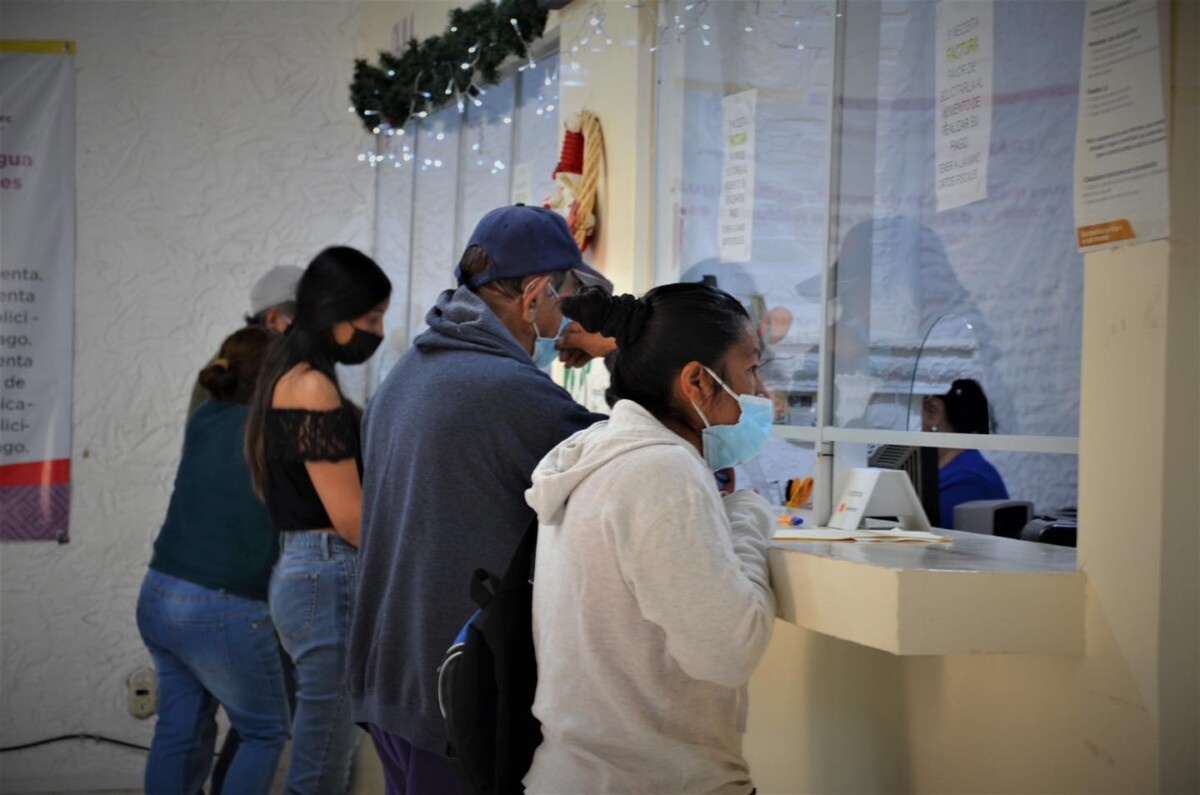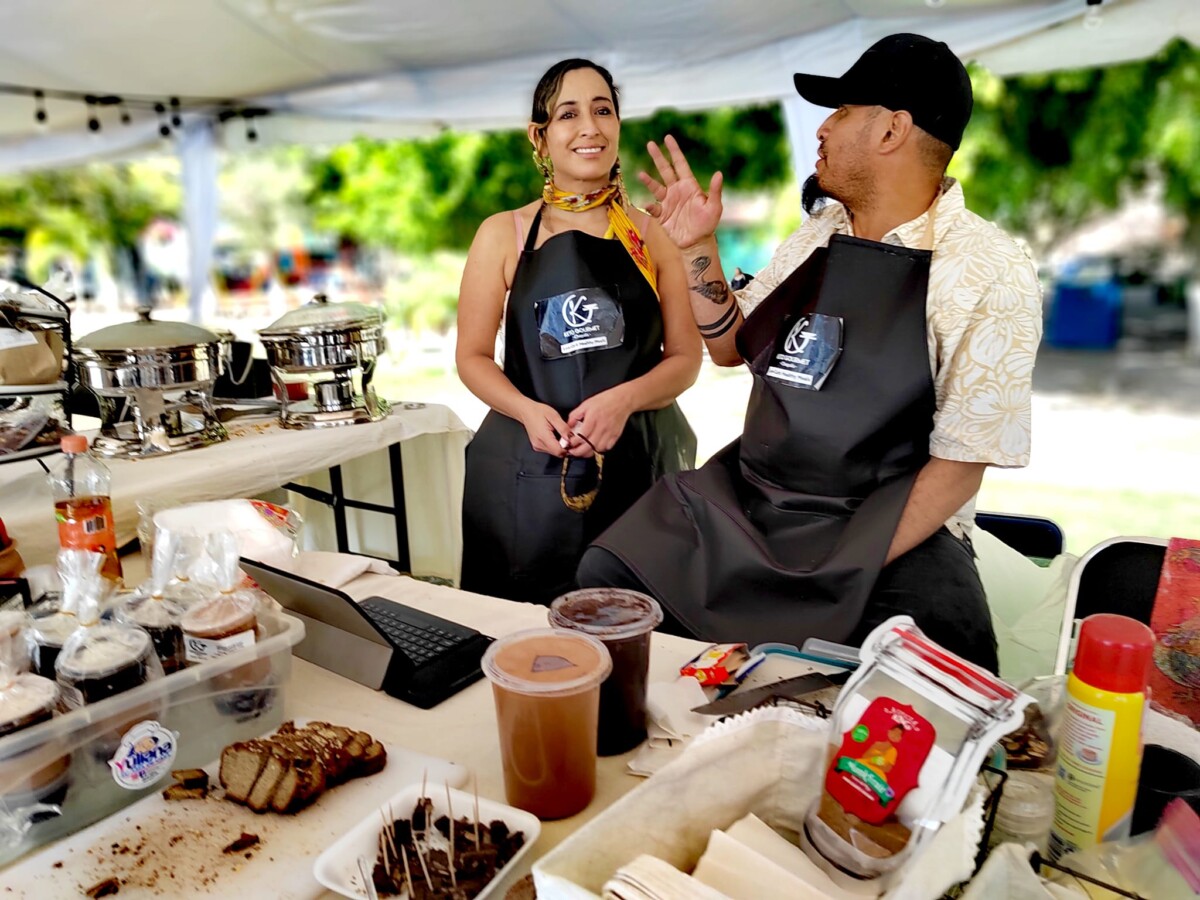Ajijic
Magical Towns in Jalisco will receive 15 million pesos this year
Some of the houses on Zaragoza Street still preserve the typical architecture of Ajijic and bright murals on their facades.
Sofía Medeles (Ajijic, Jalisco) – The 2022 Jalisco State Expenditure Budget allocates 15 million pesos for the nine Magical Towns of the state, ‘which would mean 1.666 million pesos for Ajijicif, as it was last year, the budget is split equally among Jalisco’s nine Pueblos Mágicos.
In 2021 Ajijic received 1.333 million pesos for its Pueblo Mágico budget, some of which was returned unused to the State. Part of the budget was slated for a festival that never took place due to the pandemic, some for a mural contest, some for an as yet unopened information booth on the boardwalk, and some for signage that has not been completed.
The 2022 Expenditure Budget of the Government of Jalisco has prioritized health, security, education and infrastructure but it has allocated 152 million pesos to tourism, of which 15 million are for the nine Magical Towns: Tapalpa, Mazamitla, Lagos de Moreno, Mascota, San Sebastián del Oeste, Talpa de Allende, Tequila, San Pedro Tlaquepaque and Ajijic.
To learn more details about the Pueblos Mágicos in our state, visit the website: https://secturjal.jalisco.gob.mx/nuestro-estado/pueblos-magicos.
Translated by Patrick O’Heffernan
PHOTONOTE : The Virgin of Zapopan visits the Lord of El Monte
The Entry of the iconic image of the Holy Virgin of Zapopan, Patroness of the Archdiocese of Guadalajara and Queen of Lake Chapala, kicked off the celebrations of Señor del Monte, Patron Saint of the town of Jocotepec since 1833. The celebrations which began January 6, recalled that according to tradition, Señor del Monte saved the people of Jocotepec from the Morbus Cholera epidemic. The Holy Virgin of Zapopan is also known for miracles such her emergence intact from the collapse of a chapel in 1609
The Holy Image stayed until 4:00 pm on Sunday to return to its resting place in the Basílica of Zapopan, where images of the Virgin and Señor del Monte were worshiped by hundreds of faithful in the hope of putting an end to the new global pandemic.
Culture Director for Ajijic and San Antonio resigns
Santiago Baeza, former Culture Director in Ajijic and San Antonio Tlayacapan. Photo: El Informador.
Jazmín Stengel. – After the unexpected departure of Santiago Baeza, who served as Culture Director in Ajijic and San Antonio Tlayacapan during the first hundred days of the current administration (2021-2024), the Culture Director for Chapala, Sergio Arturo Unzueta Flores, remains in his position and denied rumors of his resignation.
The departed Baeza declared exclusively for Laguna, “I could not be part of a situation in which the direction of culture was being pulverized.” He said he was grateful for the opportunities and support that Mayor Alejandro de Jesús Aguirre Curiel offered him during his short administration in the towns of Ajijic and San Antonio Tlayacapan.
Baeza surprisingly made public his resignation through a tweet on his personal account on January 8, saying: “I made the decision to resign from the municipality of Chapala. Three months of work there gave me reason, dividing the direction of culture in two was not viable. I step aside, so that @AlejandroA_C, the mayor, has the freedom to decide on that area, for the benefit of Chapala.”
Baeza said he believes such a sensitive direction cannot be split into pieces and noted, “I cannot bear the responsibility that this fraction generates.”
Despite his resignation, the ex-official Baeza invited the mayor to reconsider the structure of the dependency and return it to what it should be, “A solid direction of Culture, with resources, with strategy and with projects.”

Sergio Unzueta, Culture Director in the municipal capital and the rest of the towns.
“The commitment was for 100 days, and those who know me know that I did it under protest,” said Baeza, who said he was surprised to realize that the Directorate of Culture was going to be divided in two during the current administration (2021-2024).
Because of this, Santiago analyzed from the beginning the viability of the situation. For him, beyond collecting a salary, the institution is more important than the people, so he opted to resign from his post.
“What was worked on during these three months has to be maintained,” Baeza said. “I am going to do it. I don’t need to be appointed to be able to give of myself to promote culture.”
He said the three months were very interesting from his personal perspective, and he asked that the cultural communication groups he formed in the municipality be maintained for the coordination of creatively gifted residents.
The former cultural official plans to summon the artists of the towns to make a project proposal to the Municipal Government with a totally civic aspect.
“Cultural promotion is of the community and we are all part of it, as a kind of network,” Baeza said, continuing to work with the Municipal Government as a citizen because, “We need them, but the government also needs us.”
Sergio Unzueta, in charge of the Directorate of Culture in th Chapala and the delegations, said, “We are still here and we are working,” during a talk with Laguna,in the Centro Cultural Antigua Presidencia (CCAP), in the municipal capital.
Translated by Mike Rogers
The Terranova Institute inaugurates the first school tennis court in Lakeside
The facilities were inaugurated in December with a ribbon cutting in which authorities from the Ministry of Education Jalisco, the City Hall and the educational institution itself participated.
Editor. – The Terranova Institute of Ajijic inaugurated the first tennis court in an educational institution on the shores of Lake Chapala with a religious mass, a ribbon cutting and a demonstration match played by its students.
The sports facilities were inaugurated during the month of December and will be used by students who decide to take up this sport as part of the optional subjects in their academic offerings.
During the inauguration the administrative director, Salvatore Blum, emphasized that with tennis the institution will now have five sports disciplines for the students, as part of the comprehensive education they receive so that they can achieve the best version of themselves through discipline, perseverance and teamwork.
The inauguration was attended by educational authorities from the Secretary of Education of Jalisco in the region, as well as representatives of the Chapala City Hall and benefactors of the educational institution, in addition to students and teachers of the school.
Translated by Patrick O’Heffernan
Despite discounts, slow payment of water service in Ajijic
No lines at SIMAPA Ajijic during January collections
Sofía Medeles (Ajijic). – The collection of the Municipal System of Potable Water and Sewerage (SIMAPA) Ajijic, has been slow, according to the head of the agency in the delegation, Timoteo Aldana Pérez. He asked for the cooperation of the people to pay their bills.
According to the interviewee, Ajijic is the delegation with the least number of defaulters, since there is a good culture of payment here, but in recent years they have been slower to pay, due to the pandemic situation and the slow economy that this entails.
They do not have an estimate of what percentage has paid, since the final data will not be available until March. He believes that 40 percent of Ajijitecos are delinquent, and of that number 20-40 percent have very late accounts. «We are not looking to cut or reduce the service of debtors, but to invite them to pay,» he stressed.
«The municipal president, Alejandro Aguirre Curiel, gave us orders to arrange discounts during the first months of the year. People in general who have no debt are given a 20 percent discount if the house is in their name and they pay at least the minimum. The agreements can be made throughout the year, the idea is to get people to pay,” explained Aldana.

Timoteo Aldana Pérez, the head of SIMAPA Ajijic, said that «Payments this year have been very slow.”
Aldana. said that to provide adequate service to all residents, everyone needs to pay their bill. SIMAPA has debts, personnel, and supplies to be paid. A higher collection rate makes it easier for them to offer a more efficient service.
Aldana emphasized that during the previous administration the needs of Ajijic were not fully covered. One of his goals for 2022, is to have all homes in Ajijic receive water service at least for twelve continuous hours, if not all day.
Aldana said that he has not received instruction for part of the money collected from the payment of water to remain in the delegation, as the municipal president promised in his campaign, since their priority is to have both current payments and the necessary material for their work.
Translated by Nita Rudy
El Festival de La Michi se inaugurará el 20 de enero en La Cochera Cultural
Mariajose Medeles como La Michi en la película «La leyenda de Michi-Cihualli».
Patrick O’Heffernan . Ajijic (JAL)- El Centro Cultural de Arte y Cultura La Cochera Cultural en Ajijic, está produciendo un Festival de La Michi, de tres días de duración, con arte, danza, música y cine, dedicado a la leyenda de Michi-Cihualli, la “Diosa del Lago de Chapala”. El festival se celebrará desde el jueves 20 de enero al sábado 22 de enero, respetando el aforo y siguiendo todas las medidas de sanidad dictadas por la Mesa de Salud.
El maestro Antonio López Vega, comisario de La Cochera Cultural, ha organizado el festival en torno a la leyenda de Michi-Cihualli que le contó su abuela, utilizando conceptos artísticos en los que lleva años trabajando. En él se proyectarán en primicia el cortometraje experimental «La leyenda de Michi-Cihualli» y el documental «Al encuentro de la historia de Michi-Cihualli», además de la presentación de danza contemporánea y multimedia «Habitando Michi-Cihualli», junto con los Raperos de San Sebastián y mesas redondas con artistas, actores y activistas locales que trabajan para proteger el Lago y las montañas.
El festival es gratuito, en beneficios del grupo grupo Axixic Michicihualli y el Respaldo Alimentario de Juanacatlán. La Cochera Cultural se encuentra en calle Javier Mina #49, en Ajijic.
Te compartimos el programa general del festival:

Ajijic locals say that the Coffee, Chocolate and Wine Festival was not affordable
The Coffee, Chocolate and Wine Festival was held on January 8 and 9 at the Ajijic Malecon.
Sofía Medeles (Ajijic, Jal.)– Although the «Coffee, Chocolate and Wine Festival» was well attended by tourists, the “Ajijitecos” or local residents didn’t like the event because they felt that this type of festival does not help local commerce and only benefits a few.
According to 14 locals interviewed at the festival held last weekend (January 8 and 9), it is the foreign merchants who are taking advantage of the Pueblo Mágico designation, which in fact doesn’t benefit local commerce, but rather harms it, in addition to the fact that the prices are too high for local people.
«They are only using the Pueblo Mágico designation to benefit a few, because not all of us produce the kind of things they sell at these festivals, and besides, they are expensive. Only tourists or Americans can afford to buy things from there. Many of us would like festivals that are really made for ajijitecos,» said Luis, who was present on the malecón with his family while the event was taking place.
The event, installed on the Ajijic boardwalk corridor, was attended by around 50 exhibitors, who competed with the merchants who set up shop on the boardwalk every weekend.
The street merchants interviewed pointed out that there was a lot of tourism, but sales did not go well, since the public concentrated on the festival, which offered a variety of products ranging from food and handicrafts to art pieces.
“Yes, there are a lot of people, but we’ve hardly sold anything. Look, those from the festival sell the same things I do, and that’s why I haven’t sold much,» complained one of the street merchants who set up shop in the handicraft corridor on one side of the Ajijic pier.
Ignacio, an Ajijic native, said that people don’t even come to browse, thinking that these are products they can’t afford to buy. «One prefers not to get involved in these things. Apart from the fact that there are always a lot of people who must crave these products, and I say crave, because when you ask, they tell you that a sandwich, a pair of flip-flops, or a sweet is more than 100 pesos. That’s very different, for example, from the sales that take place during the November holidays, where you know that you will be able to afford many things.”
A woman named Brenda García, originally from San Miguel de Allende, commented that something similar happens where she comes from, and stated that she believes that this happens in places where there is a lot of tourism. «What happens in Ajijic is a controversy that also happens in San Miguel de Allende, a tourist town in Guanajuato. Suddenly there are events that are focused more on tourism, or who can spend. The difference is that over there they are usually held in private places such as restaurants or vineyards, thus better targeting the public they want.”
Maximiliano «Max» Macias Arceo, in charge of the office of the Ajijic delegation, commented that one of the main problems that may cause these opinions are the high prices of the exhibitors, but that it’s not possible to compare products that companies manufacture to the handmade products.
«Between a product from an established company and one from an artisan there is no point of comparison. We understand that the prices they charge don’t suit us, but we must also consider that they come from distant places, such as Morelia, Yucatán, Oaxaca, Michoacán, and they have to cover those large expenses, so we can’t put conditions on their prices. Even so, I hope that in the future we can have more balanced events, so that we all have the opportunity to buy something we like.»
The Coffee, Chocolate and Wine Festival was born in Patzcuaro, Michoacan, a little over three years ago, and this year, for the first time, it is being held in Jalisco. The event brought exhibitors from various parts of the country – for example, Oaxaca, Mérida, Yucatán, Michoacán – and not only exhibited food, but also crafts and local art.
Translated by Sandy Britton and Patrick O’Heffernan
Coffee, Chocolate and Wine Festival lax with COVID-19 protection measures
During the day there was a large flow of attendees. Due to the constant offering of tests, not everyone wore a mask during their stay at the festival.
Sofía Medeles (Ajijic, Jal.)– In spite of assurances to the press prior to its opening, the Coffee, Chocolate and Wine Festival organizers failed to implement COVID-19 prevention protocols as they had planned.
At the pre-event press conference, event organizer Raúl Ceniceros proposed that event staff would limit and control the capacity of the crowd inside the tent by having only one entrance and one exit, and that they would take temperature checks and enforce the use of face masks for both attendees and exhibitors. However, none of these measures were fully instituted.

The inauguration of the festival was presided over by the mayor of Chapala, Alejandro Aguirre Curiel; the director of tourism, Paola de Watterlot; the head of the Ajijic delegation, Maximiliano Macías Arceo; the municipal trustee Gamaliel Soto Pérez; and the event organizer, Raúl Ceniceros.
The festival, held over two days (January 8 and 9) on the Ajijic boardwalk, was well attended and at times saw hundreds of people crowded together inside the tent. Neither exhibitors nor visitors were required to wear masks, and the public could enter at different points without using antibacterial gel or getting temperature checks. Furthermore, the constant sampling of products on offer at the event was a pretext for many not to use masks.
Event staff stationed at the designated «entrance» to the festival tent, shared that the only instructions they had been given were to ask people entering to wear their masks; to hand out sanitizing spray, and to take peoples’ temperature. They said that overall they had no major problems carrying out the safety measures, except with a few attendees who refused to comply.
From the perspective of exhibitors, however, the festival was a success. Several exhibitors interviewed stated that they are very grateful for events like these, as they provide increased exposure for their products and opportunities for sales at a time when such opportunities are scarce due to the pandemic.

The festival, held over two days (January 8 and 9) on the Ajijic boardwalk, was well attended and at times saw hundreds of people crowded together inside the tent.
«It went very well, we are delighted with the event, the first of this year,” commented an exhibitor from Do Perniler, marketers of Serrano and Iberian hams from Tequisquiapan, Querétaro. “People kept stopping by, everything was very pleasant, and everyone was open to trying our products. It went very well, and Ajijic is a wonderful place; we left very much in love.»
The event, in addition to having samples of food products and wines, also had art and handicrafts for sale. The sixty-six exhibitors included a number of local artisans, such as Luna Cacau.
The head of the Ajijic delegation, Maximiliano «Max» Macias Arceo, assured that while some might look unfavorably on the event due to the circumstances of the pandemic, there were no serious mishaps. He also commented that he viewed the event as positive, in keeping with the promoted theme and of good quality.
Translated by Rebecca Zittle
Opinion: Looking at life in Lakeside
By Patrick O’Heffernan
Michi-Cihualli is the mythological goddess who symbolizes the essence of the waters and lands of Lake Chapala. According to the legend, she is the mediator of good weather and the queen of the wind- she blows the gales of the four cardinal points, enabling the fishermen to know the direction of the squalls on the lake and t and farmers the good weather for corn.
But an important part of the legend of Michi-Cihualli is her first appearance: when the ruling tribe practiced human sacrifice and threw children into hot springs, Michi-Cihualli became enraged and created powerful winds, whirlpools, clouds of ash and eventually an earthquake to stop the desecration of her waters.
We don’t sacrifice humans any more, but we are sacrificing the Lake itself and the Ribera – the lands of Lake Chapala — with pollution, traffic, illegal development, and poverty. And Michi-Cihualli is again blowing her powerful breath over the lake in warning, only this time it is not winds she is raising, but a rekindling of the values she taught and resistance to those who would float them.
Next week, on January 20, 21, and 22, her winds will gust from one of her spiritual homes in Ajijic, La Cochera Cultural, in a three-day Festival of Michi. A residence for artists of all kinds, La Cochera Cultural is curated by Antonio López Vega, an artist who has spent a lifetime capturing and chronicling the spirit of Michi-Cihualli in painting and sculpture. The Festival he is curating at La Cochera Cultural will use film, art, music, dance, and discussion to explore the spirit and lessons of Michi-Cihualli and what is happening today in Ajijic.
In a separate but parallel effort, a group of musicians and artists are considering a concept paper Espiritu de Music y Art, to bring the lifeforce of Michi-Cihualli to Ajijic and San Antonio-Tlayacapan all year round through a marriage of art and music. They are responding to call by Ajijic Culture Director Santiago Baeza (who has just resigned) for events at local venues bringing together two of Ajijic’s greatest assets: artists and musicians.
In another separate but parallel effort, the Pueblo Mágico Ajijic Committee is anticipating an infusion of money for ventures enhancing and promoting the magic of the pueblo. While it waiting for funds, the Committee is developing plans and evaluating projects for their contribution to the Pueblo Mágico designation.
El Festival Café, Chocolate y Vino, pasó por alto las medidas que ellos mismos propusieron
En distintos puntos del día se pudo notar un gran flujo de asistentes. Debido al constante ofrecimiento de pruebas, no todos portaban el cubrebocas durante su permanencia en el festival.
Sofía Medeles (Ajijic, Jal.)- Pese a que en la presentación ante la prensa del Festival Café, Chocolate y Vino se hizo énfasis en que se cumplirían los protocolos de desinfección para evitar contagios de Covid-19, en la realidad, los organizadores no siguieron las normas que ellos mismos propusieron.
Y es que, aunque el organizador Raúl Ceniceros, aseveró que, para controlar el aforo de las personas dentro del evento, contarían con una sola entrada así como una sola salida, además del uso de cubrebocas, cofias y caretas de los expositores, y la petición del uso permanente de cubrebocas a los asistentes, ninguna de los medidas se cumplió a cabalidad.
Dado que durante los dos días del festival (8 y 9 de enero) realizado sobre el malecón de Ajijic, se aglomeraron cientos de personas, aunado a que ni expositores y visitantes se les exigió el uso correcto del cubrebocas, aunado a que la gente podía ingresar por distintas partes sin usar el gel antibacterial, es decir, no había una entrada ni salida, exclusiva. Además, la cata constante de productos que se ofrecían dentro de la vendimia era el pretexto para no utilizar el cubrebocas.

El evento, además de contar con muestras gastronómicas de productos, contó con venta de arte y artesanía.
El staff del evento que se encontraba en la “entrada” de este ofreciendo sanitizante, comentó que las únicas indicaciones que se les dio fue pedir que las personas que entraban portasen sus cubrebocas, así como repartir el spray sanitizante y tomar la temperatura, además afirmaron que no tuvieron mayores inconvenientes al realizar tales requisitos con las personas, más que unos cuantos que se negaban a obedecer.
Por otro lado, varios expositores entrevistados, declararon que se encuentran bastante agradecidos con este tipo de eventos, que les ayuda a reactivar su economía, ya que, por la pandemia tienen pocas oportunidades de presentar sus productos.
“Nos fue muy bien, estamos encantados con el evento, el primero del año; la gente no deja de pasar, todo muy agradable y todos muy abiertos a probar nuestros productos. Nos fue y nos resultó muy bien, y Ajijic es un lugar maravilloso, nos vamos muy enamorados”, comentó un expositor de Do Perniler, comercializadores de jamones serranos e ibéricos, provenientes de Tequisquiapan, Querétaro.
Finalmente, el Encargado de Despacho de la delegación de Ajijic, Maximiliano “Max” Macías Arceo, aseguró que, pese a que puede haber gente que ve mal el evento debido a la pandemia, no hubo percances graves, y considera que hay un saldo blanco. Además, comentó que le pareció un buen evento, coherente con la temática con la que se promocionó y con una buena calidad.
© 2016. Todos los derechos reservados. Semanario de la Ribera de Chapala










